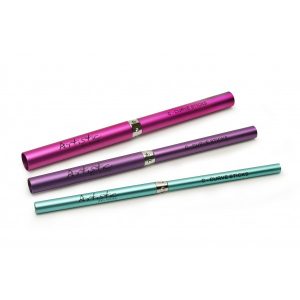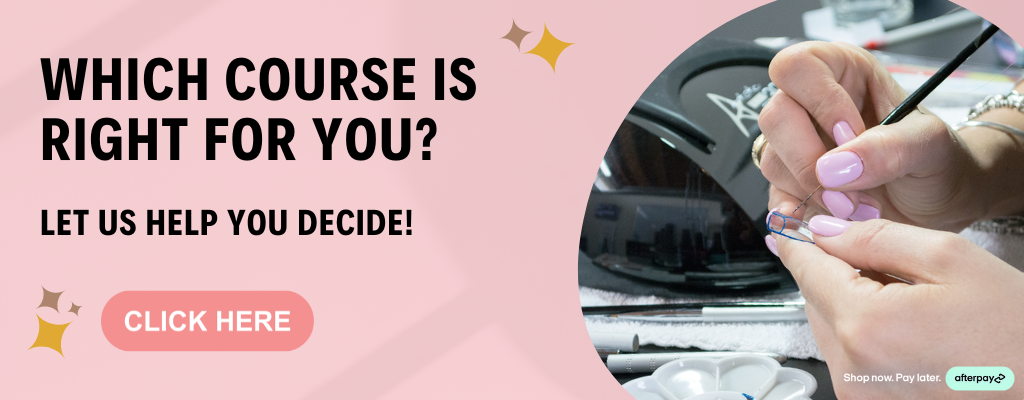Happy ‘First Week of School Holidays’!
If you have kids, I hope your grocery bill isn’t as awful as ours was last night. If you don’t have kids, enjoy these beautiful weeks of minimal traffic.
This week, we’re diving into some Chemistry Basics – this is Part 1 of a series that will give you insight into some of the key concepts that make or break nail treatments – and hopefully some insight into why proper training is essential in our industry.
Nail Vocab 101 – ‘Acrylate’
‘Acrylate’ refers to a type of plastic derived from methacrylate. Most products used in your course, including all artificial nails and adhesives like gels, liquids, powders, wraps, and tips, are based on acrylates – sophisticated plastics used in both beauty products and high-tech applications outside the beauty industry, such as medical devices, computers, commercial jets, and space shuttles.
Nail Vocab 102 – ‘Monomer’
Plastics are like giant molecular puzzles, where each piece is a tiny compound called a monomer—think of it as a single ingredient in a massive recipe. In nail tech terms, imagine monomers as tiny beads of acrylate in a scoop of acrylic powder—there are 50 in just one grain!
I Like Cookies
Now, for a real life comparison, think about baking. Just as flour, eggs, and sugar can mix into cakes, muffins, or brownies, monomers can mix into various types of plastics. They’re not all the same; different monomers mix up to create different ‘recipes’ or proprietary blends of plastics.
‘It’s so crazy how fast this polish dries’ – Every client ever.
Acrylates don’t dry, they cure. To solidify these ingredients into a nail product, we need a process similar to baking called polymerisation or curing – it’s like turning liquid batter into a solid cake or setting jelly in the fridge. This magic starts with an ‘initiator’, much like baking powder in a cake. Some initiators kick into action with heat, while others get going with light.
Monomers prefer the quiet life, so they look for ways to get rid of the extra energy they’ve just been given.
Once energized, an initiator molecule gives a monomer a little nudge, setting off a chain reaction. The monomers start linking up, passing energy along like a game of tag, forming long, tangled chains. This energetic game continues until there are no free monomers left, resulting in a solid mass called a polymer.
Don’t get in the spa when you’ve just had your nails done.
While it seems instant, just like a cake might need time to cool, these polymer chains take days to reach their full length, even though the surface is set enough to file shortly after application.
In a nutshell, polymerisation is all about mixing the right monomers and ‘baking’ them into the perfect set of nails. It’s a fascinating dance of chemistry and creativity that gives us those gorgeous finishes!
As we dive into this further, you will learn how to manipulate Acrylate characteristics to solve problems and improve your services.
Tell me (with the Submit button at the bottom) – what is one thing that frequently happens to your nails that you wish you could solve?
This is what else we loved last week –
- Witchcore Nail Art on Crazy Long Extensions
- Everyone frothing over Edge-shaped nails
- ‘Everybody Flirts’ being the colour equivalent of an Indie Band you are the last to find out about.
- Embracing the Competition Free Zone as we get ready for the Nail Central Nail Expo in Hamilton next month!
- Chocolate nails now that Easter is over.
Click here to send us YOUR thoughts, feedback or highlights, we would love to share
PS Our next intake starts 21 April with fortnightly live lessons on Sunday afternoons. Enrol here or ask a Mentor to call you.
PPS For the wrist update from last week that no one asked for, it didn’t even hurt after a couple of hours BUT then a full 5 days later I was getting my toes done (heck yeah local trade swaps) and noticed my whole wrist was bruised? So dramatic.


